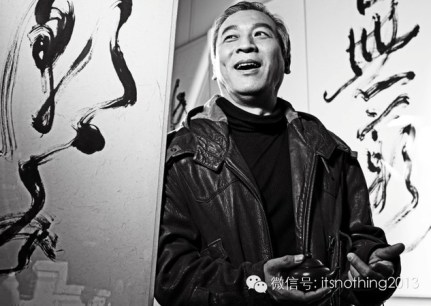Before I recap last week’s class, kudos go to Meril for bravely posting her work on our blog! If you missed it, make sure to check it out. And if you’re a current student who would like to publish your own work, remember, you can log in anytime! Even after our final official class tomorrow.
Having to combine themes from the past two weeks of classes– race and disability– provoked unexpected, exciting connections. We realized that the blind poet Robert Hayden‘s “The Tattooed Man,” a reading originally assigned to disability, was not only about the privilege of seeing. The poem also comments on the dangers of being seen primarily through the lenses of prejudice and otherness, as someone Black, queer, and disabled.
In a similar move, Audre Lorde, a Caribbean-American poet with roots in Barbados and Carriacou (part of Grenada), connects ableism, feminism, and racism in her early childhood memoir, Zami: A New Spelling of My Name. With dark humor, she details the presumed incompetence ascribed to her by teachers because of her race, class, and disability in her early childhood. (By the way, an entire study was recently published on the subject of Presumed Incompetence, and their Facebook page offers a lot of interesting resources.) For more on Lorde and Hayden, check out last year’s post on disability.
The lesbian Jamaican-Chinese slam poet Staceyann Chin, slotted for our week on race, alleges it is politically irresponsible to pretend oppressions can be separated in her performance of “Homophobia.” A recent revision of an earlier poem appropriately titled “All Oppression is Connected,” she first presented this poem at a celebration of the civil rights activist Martin Luther King Jr. at the Apollo Theater in Harlem this past winter.
We also finished our previous discussion of Toni Morrison‘s “Recitatif,” which traces an interracial friendship between two female orphans in the 1960s but never reveals which woman is black and which is white. Reportedly the only short story the great literary octogenarian ever published, “Recitatif” pushes the reader to rethink racial stereotypes in relationship to gender and social class. One student, J.D., tried her own hand at sketching ambiguous characters; in her story, centered on sexuality, two individuals, one ace (asexual) and one pansexual, fell in love to disprove stereotypes about queer desire.
If you’re feeling energized, read and annotate “Recitatif” on Genius.com; help the public understand what Morrison is doing! Also, if you enjoyed Morrison’s writing, you might be interested to read her political piece on whiteness in the U.S., “Making America White Again.” You can also find her novels across the New York Public Library system. And if you’re interested in preparing for college, you might be interested to know that her novel, Song of Solomon, recently became the first novel by a Black woman added to Columbia University’s Core Literature Humanities Curriculum (hard to believe they didn’t add a Black woman before 2015, huh?). And for more on Chin and Morrison, go to last year’s post on race.
A new addition to the syllabus on race, Peruvian writer Julio Ramón Ribeyro‘s short story, “Alienation,” charted an Afro-indigenous-Peruvian boy’s lifelong attempt to whitewash himself. Descended from indigenous genocide and African slavery, López wants to transform himself into a successful white man. He renames himself Bobby and drives himself crazy trying to assimilate in the U.S., but his methods for passing aren’t terribly convincing. He can’t get past a certain class barrier in American society, and it’s obvious he’s powdering his skin. In the end, he can’t escape who he is. If you’re curious to read more fiction like Ribeyro’s, check out Beings: Contemporary Peruvian Short Stories, the anthology where I found “Alienation.” (If you have trouble tracking down a hard copy, let me know; I can send you scans from Columbia.)
The last segment of our class took a very personal turn while we talked through our own experiences of depression and the stigmas associated with mental illness in communities of color and working-class America. The first chapter from Ghanaian-American writer Meri Nana-Ama Danquah‘s memoir on depression, Willow Weep for Me, got us started. Willow is the only memoir on mental illness that I personally have ever encountered from a single mother of color. Her honesty opened us up to work through some of our own pain together and contemplate how our communities could rethink vulnerability as evidence of resilience and strength.
Although we didn’t have time to discuss lesbian Jamaican writer Michelle Cliff‘s short story on American slavery’s aftermath, “The Hanged Man,” or Scottish–Pakistani writer N.S.R. Khan‘s short story on bipolar disorder, “Familiar Skin,” you should totally check out their work! Cliff’s story can be found in her short fiction collection, Everything is Now, and Khan’s story appears in the anthology Too Asian, Not Asian Enough. (Again, if you’re interested but can’t track it down, email me about Columbia’s access!)
If you’re a teacher looking to gain access to any of these readings or lesson plans, check out the resources on the Teaching Aids page. For young writers, these are strategies we learned from writers in last week’s class.
Remember, tomorrow is our last official class! We’ll be figuring out how to live and write in the epicenter of the literary world, New York City. I’ll also share some advice about publishing poetry. Tomorrow’s packet is here, as are the writing prompts. Be on time! And dress nice– we’ll be taking a class photo at the end!









